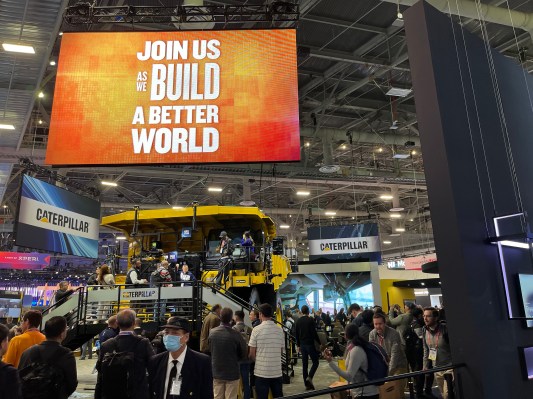I can’t get it out of my head: A honkingly big Caterpillar sign that read, “JOIN US AS WE BUILD A BETTER WORLD.” The digital recruitment billboard at CES 2023 followed promos for an autonomous compactor and excavator, and proceeded another callout: “CHECK OUT OUR BIG AUTONOMOUS TRUCK ⬇.”
I did, and boy was it ever.
A “better world” could mean anything in corporate-speak, but in this case, the company is talking specifically about sustainability — and using aspirational language to distance itself from a fossil-fueled role in carving up the earth. Like Caterpillar, many of the exhibitors I saw as I walked the tech-show floor seemed to be rinsing their brands via earthly taglines, stock photos of crops and sunbeams, plastic trees and/or AstroTurf. I find this sort of thing especially distracting now that climate is my main beat, and that’s unfortunate, because there was still lots of intriguing climate (and adjacent) tech on display this year, tucked in among the vague evocations of nature.
When I arrived in Vegas my colleague Ingrid asked if the show would feature mostly adaptive tech (for coping with the consequences of climate change) or mitigative tech (for direct emission cuts). I saw a mix of both, but much of what caught my attention skewed toward adaption. And to that end, this year CES practically overflowed with portable batteries and solar gear for campers and preppers alike. Really, there was no escape.
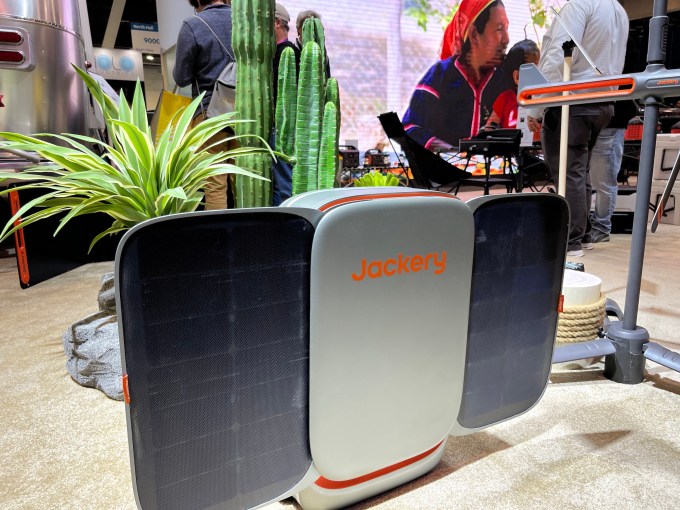
Jackery’s portable solar tech at CES 2023. Image Credits: Harri Weber for TechCrunch
Highlights included EcoFlow’s “whole-home” backup power box and Jackery’s new solar generator, but I’m sure it’s not a leap to say we should expect more gear like this in the coming years — as more people cope with climate anxiety and extreme weather events alike.
There was a ton of conservation-geared tech, too. Moen debuted a smart sprinkler with soil sensors and Rachio announced a $100 smart hose timer, both aiming to help lawn-havers save water and lower their bills. (Climate change exacerbates water scarcity and drives droughts around the world.)
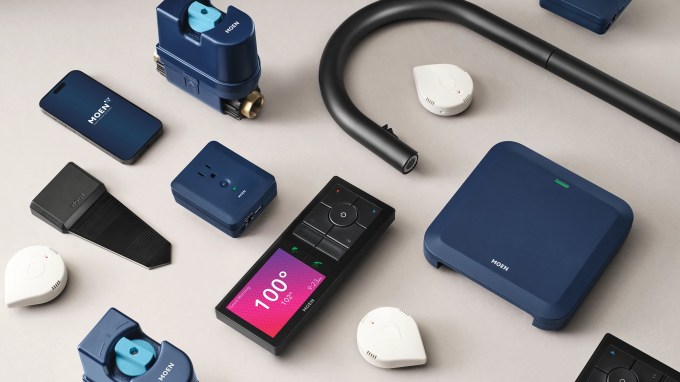
Moen’s “smart water network” gear. Image Credits: Moen
For farmers, Meropy showed off its crop-watching robot, which rolls over fields on legs that look like giant hairbrush bristles. “The idea is to provide information to farmers to help them reduce the amount of chemicals they put on the plots,” co-founder and CEO William Guitton said in an interview with TechCrunch. Meropy’s bots weigh 15 kg (about 33 pounds) and pack cameras that “scan over and under the foliage,” Guitton said.
Along similar lines, John Deere showcased farming equipment that’s also supposed to reduce fertilizer use. (Fertilizers are a major source of greenhouse gas emissions in agriculture.) Plus, Samsung announced washing machine tech that’s intended to save energy and halve microplastic pollution, while AMD highlighted energy efficiency gains in its new chips.
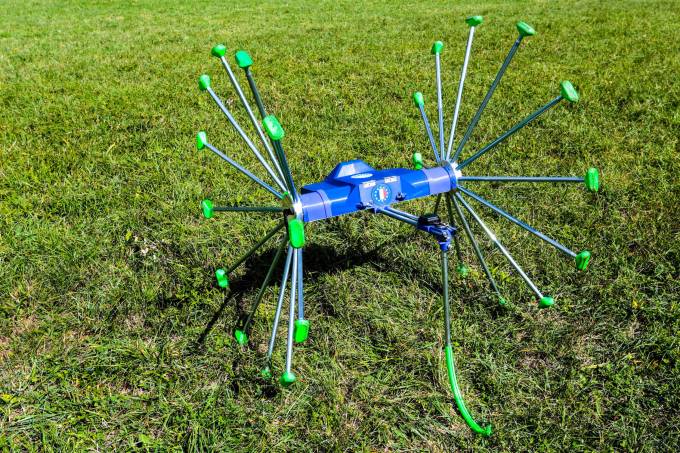
Meropy’s crop monitoring robot. Image Credits: Meropy
As for emissions mitigation, Schneider Electric made some waves with a smart-home system that’s centered around solar and energy storage. Schneider executive Jaser Faruq told TechCrunch he hopes the firm’s app will offer a “much more interesting, fulfilling experience for customers to feel like they’re in control of their power.” The system will ideally help users conserve energy and reduce their reliance on fossil fuel-powered grids, Faruq added, such as by automatically disconnecting outlets while you travel. Some of the company’s energy-storage tech reminded me a lot of Tesla’s, which is no coincidence; Faruq previously worked in Tesla’s power storage and solar energy division.
No Traffic, a company that automates and surveils intersections, also caught my eye. When I asked if its name represented a goal or was just aspirational, co-founder and CEO Tal Kreisler told me it originally started as “kind of a joke,” because when people ask how long it takes to travel through perpetually busy areas — like from San Francisco to Palo Alto — you might sarcastically say, ‘with no traffic, it should take like 20 minutes.'”
Kreisler said the company’s goal is to smarten up intersections so municipalities can prioritize whatever they want — be it cars, buses, micromobility or pedestrians (ideally the latter three). That includes timing lights to reduce traffic, so ideally fewer cars are left idling on city streets, but really No Traffic’s scope is broader than its name implies.
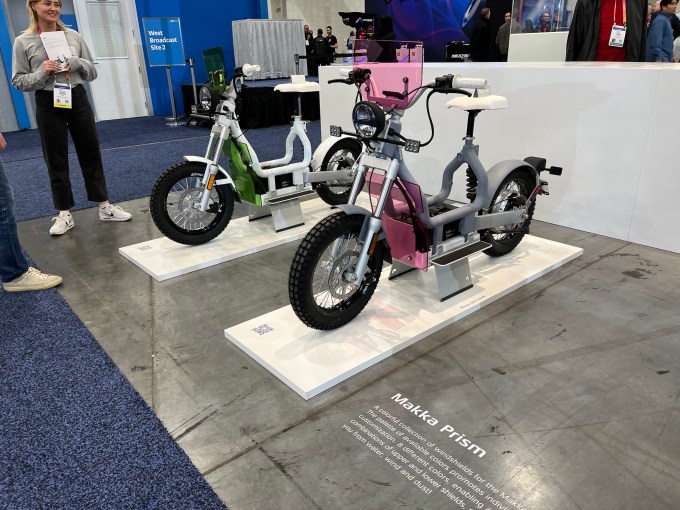
Cake’s Makka Prism electric bike. Image Credits: Harri Weber for TechCrunch
If you count electric cars and e-bikes as mitigative climate tech, as I typically do, then read my editor Kirsten’s story on how electric-vehicle tech stole the show this year. The eye-catching announcements included Mercedes-Benz’s plan for a “global” EV charging network as well as the debut of Icoma’s bizarre suitcase motorcycle. I can’t speak to the need for transforming e-bikes with screens, but it’s nice to see automakers throw more weight behind EV charging infrastructure, which is hampered by unreliable chargers and environmental racism.
Unfortunately, Mercedes plans to focus on cities, so it probably won’t help quench rural America’s charging deserts.
And though they aren’t brand-new, I enjoyed the colorful shields on Swedish brand Cake’s Makka Prism e-bikes. Aren’t they kind of cute?
